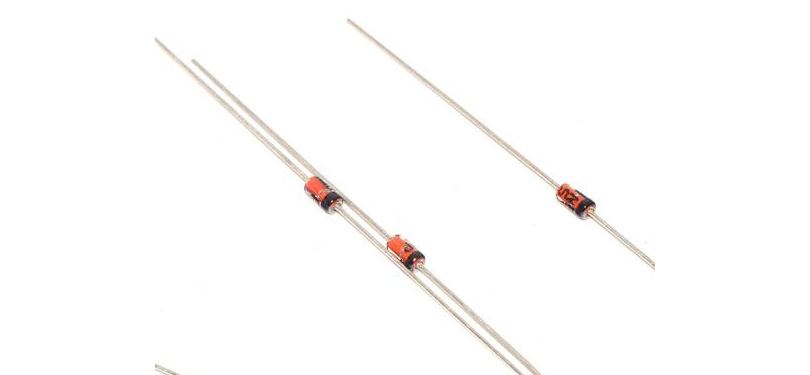

The Zener diode is a special diode that operates in a reverse breakdown state, making the voltage across the tube essentially constant. When selecting a Zener diode, it should be considered according to the specific electronic circuit. A simple parallel regulated power supply, the output voltage is the stable voltage of the Zener diode. The regulated power supply of the transistor radio can be selected with a 2CW54 type voltage regulator tube, and its stable voltage can reach 6.5V.
The voltage regulation value of the voltage regulator tube is highly discrete. Even if the same model product of the same manufacturer has a stable voltage value, it should be paid attention to when selecting. The voltage regulation value should be tested before selecting the circuit with higher requirements.
When using the Zener diode, it should be noted that the reverse current of the diode cannot be increased indefinitely, otherwise it will cause overheating damage of the diode. Therefore, the Zener diode generally requires a series current limiting resistor in the circuit. When selecting the Zener tube, if a tube with a large voltage regulation value is needed, there is no maintenance site. Several tubes with low voltage regulation value can be used in series; when a tube with a low voltage regulation value is needed, it can not be bought. Replace the Zener with a normal silicon diode forward conduction. For example, two 2CZ82A silicon diodes are connected in series and can be used as a 1.4V voltage regulator tube; however, the voltage regulator tubes are generally not used in parallel.
At present, the domestic voltage regulator tube has three electrodes, such as a 2DW7 type voltage regulator tube. The Zener diode encapsulates the two Zener diodes symmetrically with each other, so that the temperature coefficients of the two Zener tubes cancel each other out, which improves the stability of the tube. The three-electrode Zener is shaped like a crystal transistor and should be distinguished when it is selected.
In the voltage regulator circuit of the recorder and color TV, the 1N4370 and 1N746-1N986 series Zener diodes can be selected. For example, the 1N966 tube (2CW8) has a stable voltage of 16V, a dynamic resistance of 17Ω, and a voltage temperature coefficient of 0.09. The 1N975 type (2CW71) has a stable voltage of 39V, a dynamic resistance of 80Ω, and a reverse test current of 3.0mA. The current is 5uA and the power consumption is 500mw.
Silicon regulator diodes, such as the 2CW100-2CW121 series regulators, can be used in the voltage regulator circuits of electrical equipment and other radio electronics.
There are two conditions for a Zener diode to operate:
1. The voltage applied to the Zener diode in reverse is greater than the voltage regulator of the Zener diode.
2. The current through the Zener diode must reach its working condition (that is, the reverse current should be large enough, usually at least a few mA).
You follow the circuit I said, assuming a 6.2V regulator,
Positive power supply (9V) - resistance (R) - steady voltage of the voltage regulator - positive pole of the voltage regulator - negative pole of the power supply.
This resistor is calculated according to the parameters of the Zener diode. Assume that the current is 5 mA when the voltage is regulated.
Then the size of the resistor = (9-6.2) / 5mA = 1.4K or so, you can use a 1K resistor. Then you use a multimeter to measure the voltage between the negative pole of the Zener tube and the ground, basically around 6.2V, that is, the voltage is regulated.




